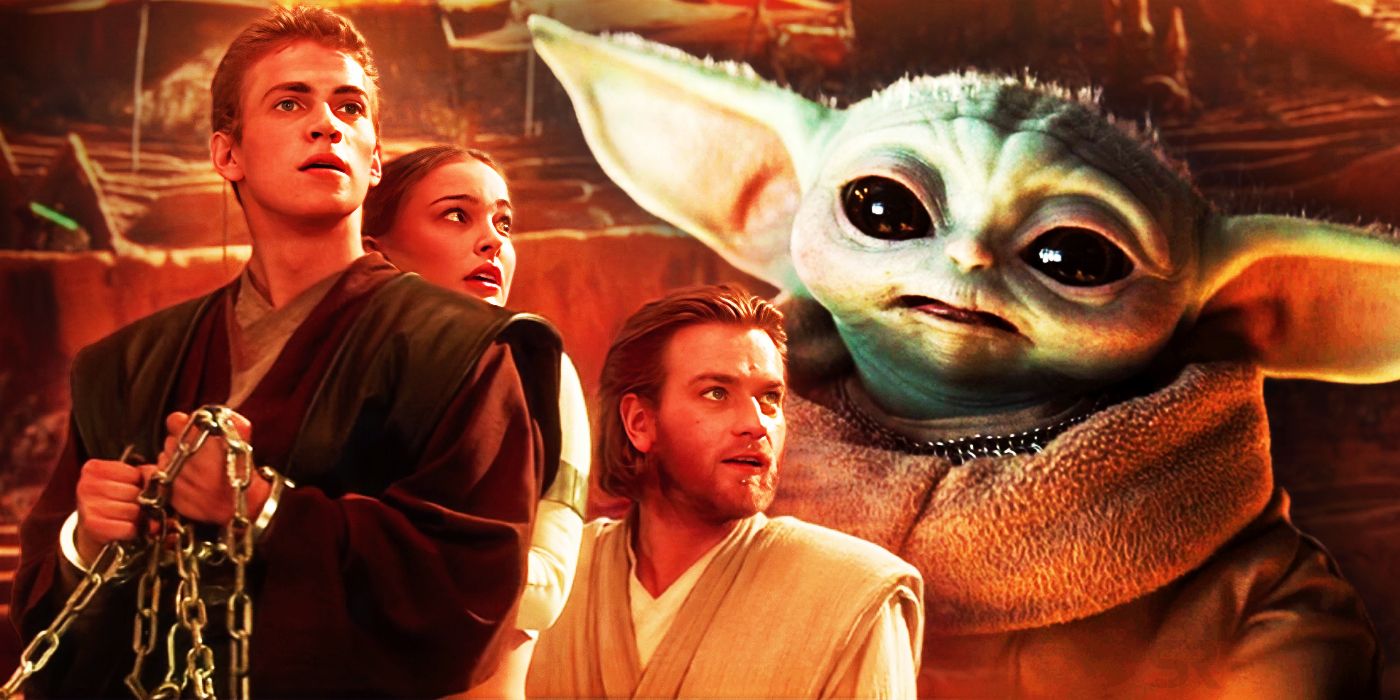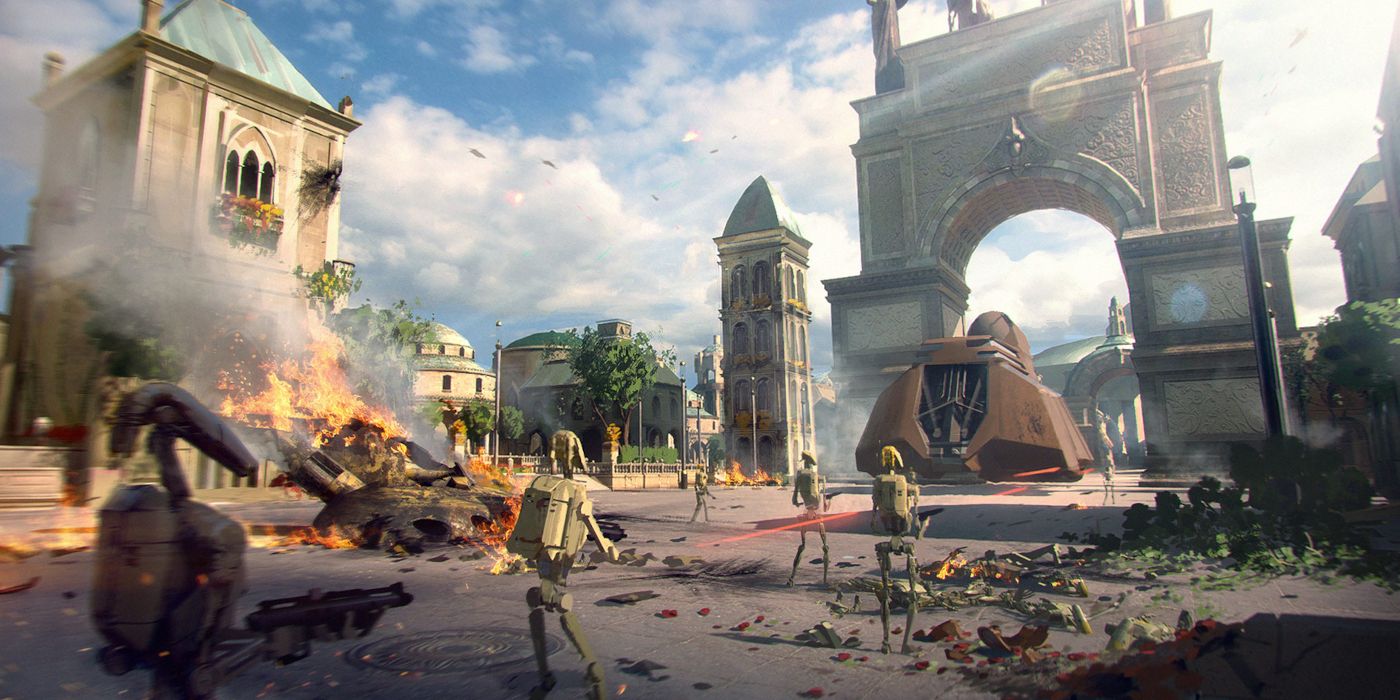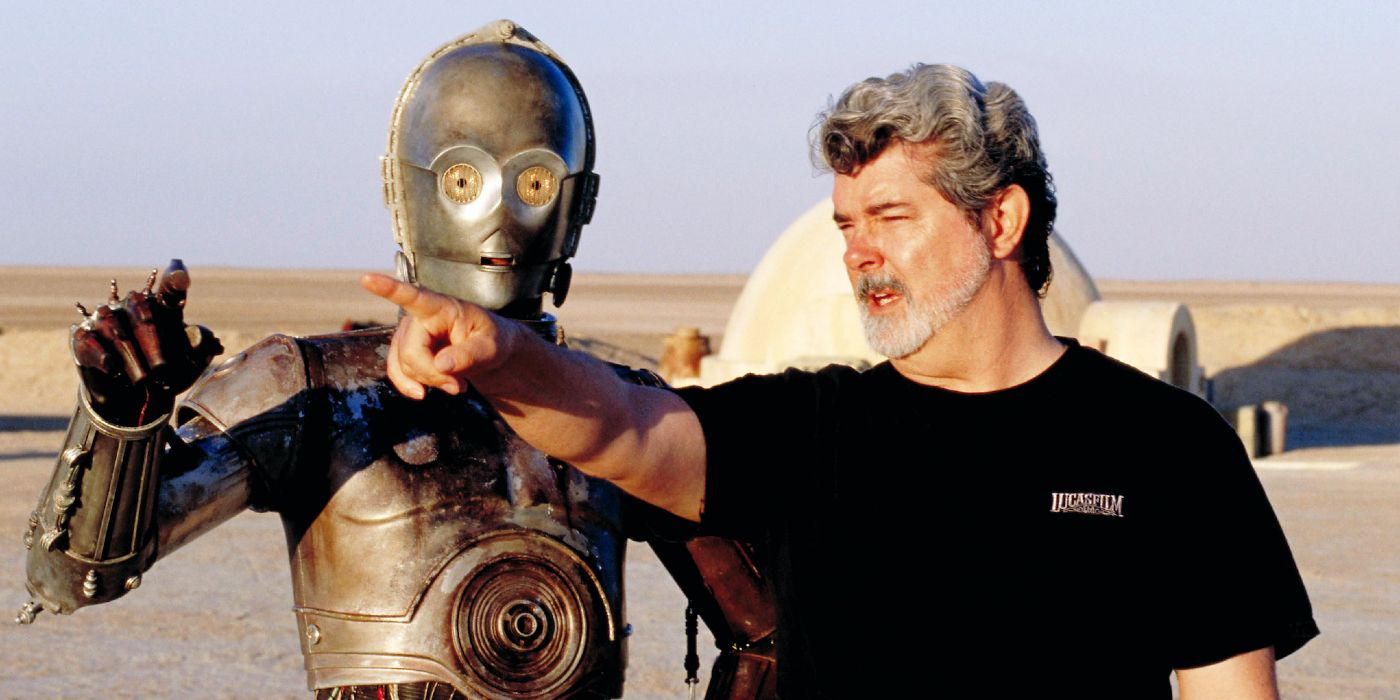The Star Wars prequel trilogy was met with poor reception when it was released over two decades ago, but now its designs are influencing the Star Wars galaxy through new shows like The Mandalorian. The Disney+ Star Wars TV shows have been filling in the gaps between the saga’s primary movies, focusing on many different aspects of the galaxy. With so much new content, it’s hard not to notice how the aesthetic of the prequels have saturated their design.
The Star Wars prequels began in 1999 with the release of Star Wars: Episode I - The Phantom Menace, and it was immediately how different it was in style from the original trilogy. George Lucas' love of CGI manifested in a busier collection of settings, with more evidence of droids and advanced technology. Now that Disney's new shows have dived further into the sophistication of the galaxy’s many worlds and civilizations, even The Book of Boba Fett and The Mandalorian have embraced these extra elements, despite their ragged themes.
Star Wars Has Absorbed The Prequel Trilogy's Aesthetic
The prequels were once seen as “less-Star-Wars” in appearance because they seemed so much sleeker and brighter than the original trilogy, and the technology was much more advanced. The original trilogy explored many planets, but they were generally rural and tended to lack much societal presence beyond the military and outlaws, leaning into what Lucas called a “used future” look. Even the droids had a shabbier existence in the originals. In comparison, the prequels might have seemed overly complicated and idealistic, but the details planted in this trilogy set Disney’s Star Wars installments up for success. It helps that the CGI and visual effects, which quickly dated in the prequels, have now been improved upon.
Though the “used future” aesthetic is still prominent, Star Wars content now successfully features societies that echo the bustling worlds of Naboo or Coruscant from the prequels. Obi-Wan Kenobi even gives a look at the culture found on Tatooine beyond Owen Lars’ moisture farm and the rowdy Mos Eisley cantina. The Book of Boba Fett features a kitchen droid model that first appeared in Star Wars: Episode II - Attack of the Clones - and the same design was seen in The Mandalorian season 1, episode 3.
George Lucas' Prequel Designs Have Successfully Changed Star Wars
The alterations Lucas made to his designs when he created the prequels have become the norm for Star Wars content, particularly when it comes to droids. The original trilogy featured several droids - many droids were seen in the Jawa Sandcrawler in A New Hope alone, but most exited to complete automated tasks while providing a vague futuristic sense to the movies. The prequels opened the door to making them a colorful part of the world, and now it’s not uncommon for each show to feature a droid that becomes a fan-favorite.
Similarly, each of the new Star Wars projects introduces political and cultural details in the same way the prequels did. New ship designs, charismatic droids, and unique relationships to the politics of the Empire were all exciting elements that the prequels brought to the Star Wars universe, and each installment in the franchise takes things a step further. Without the new designs introduced in the prequels, many great Star Wars spinoffs would be much different.



